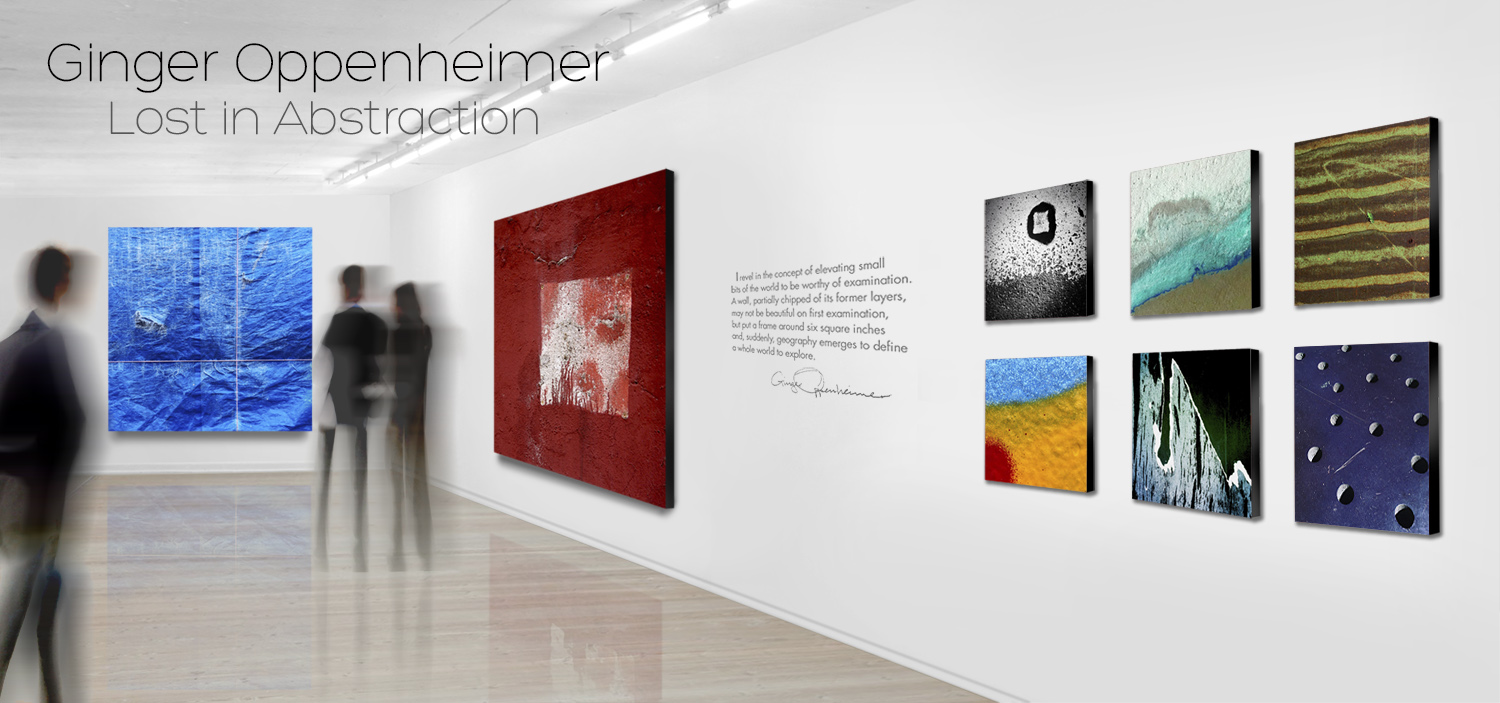

Enough said — Mark Wegner
An interview with Ginger follows the exhibit images
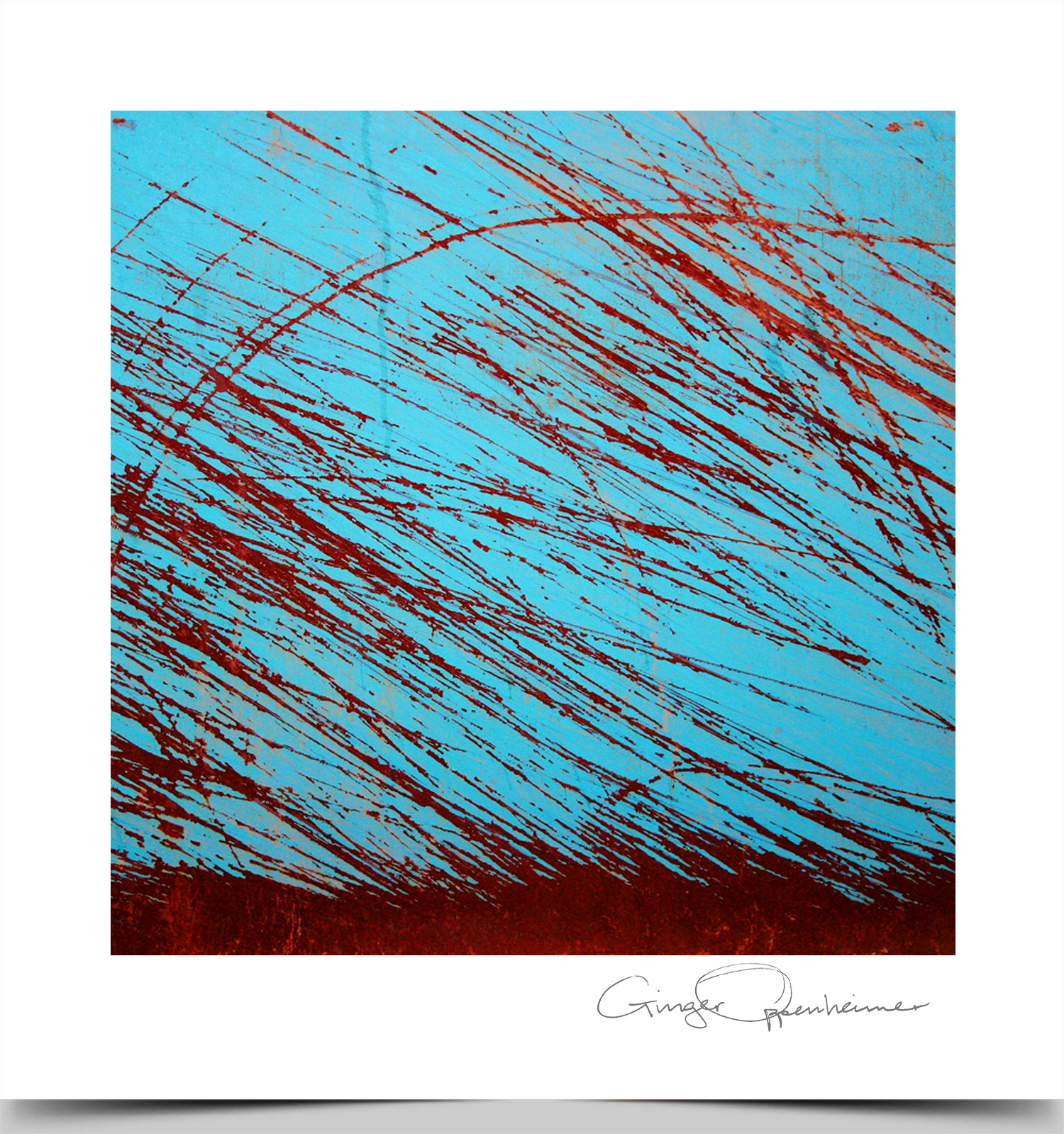
Summer Rain
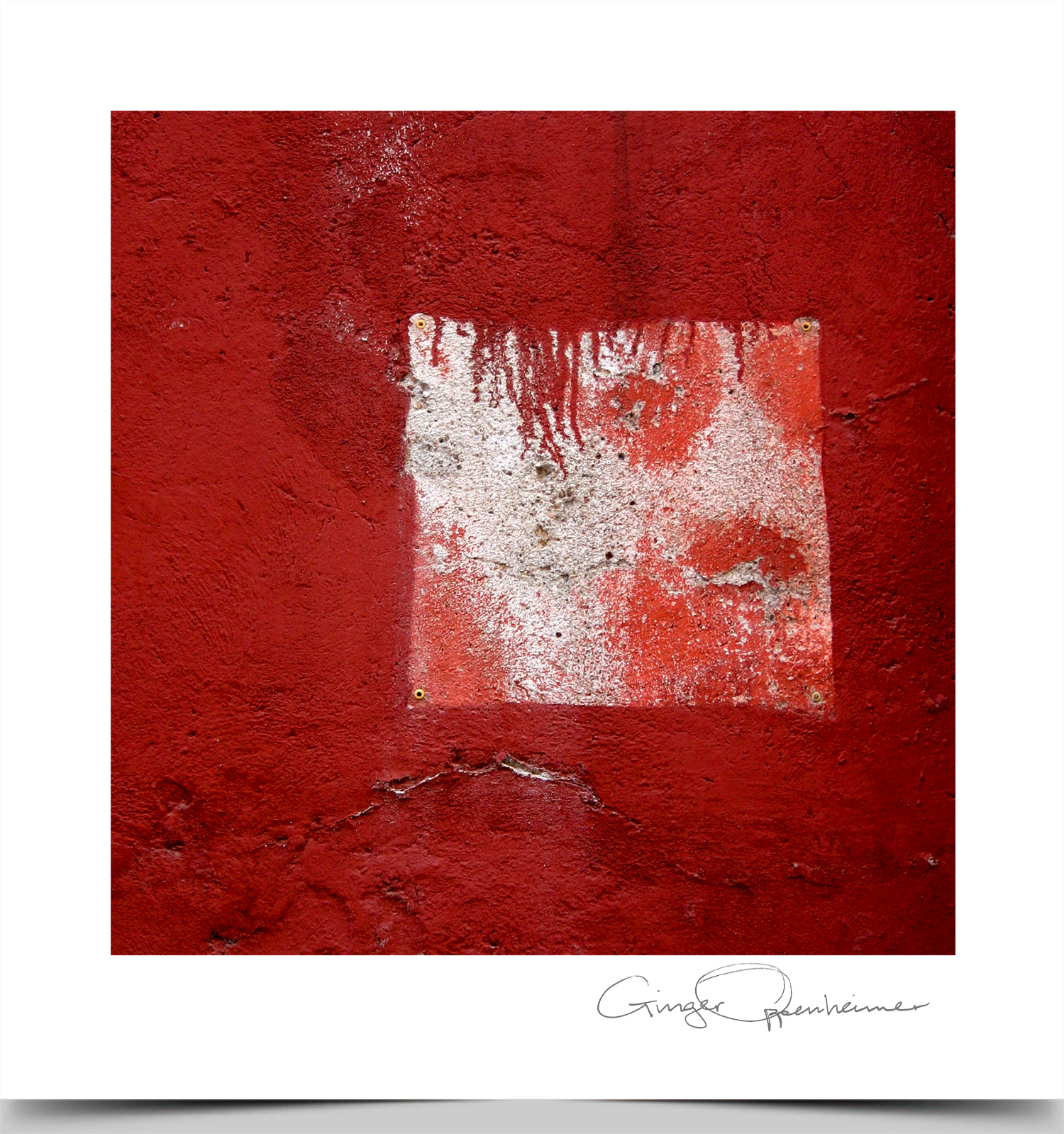
Take Over
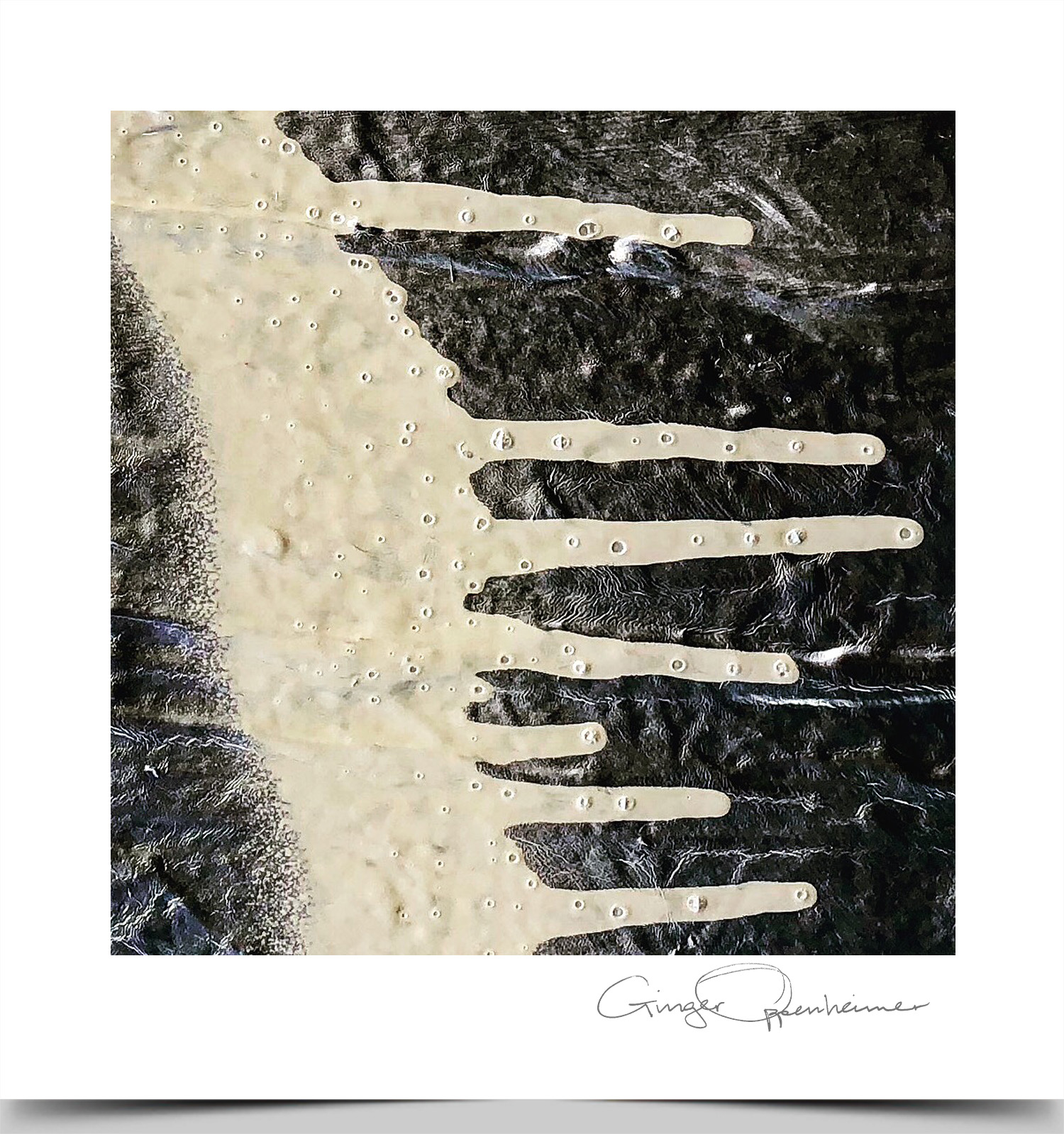
Fjords meet Swedish Pancakes
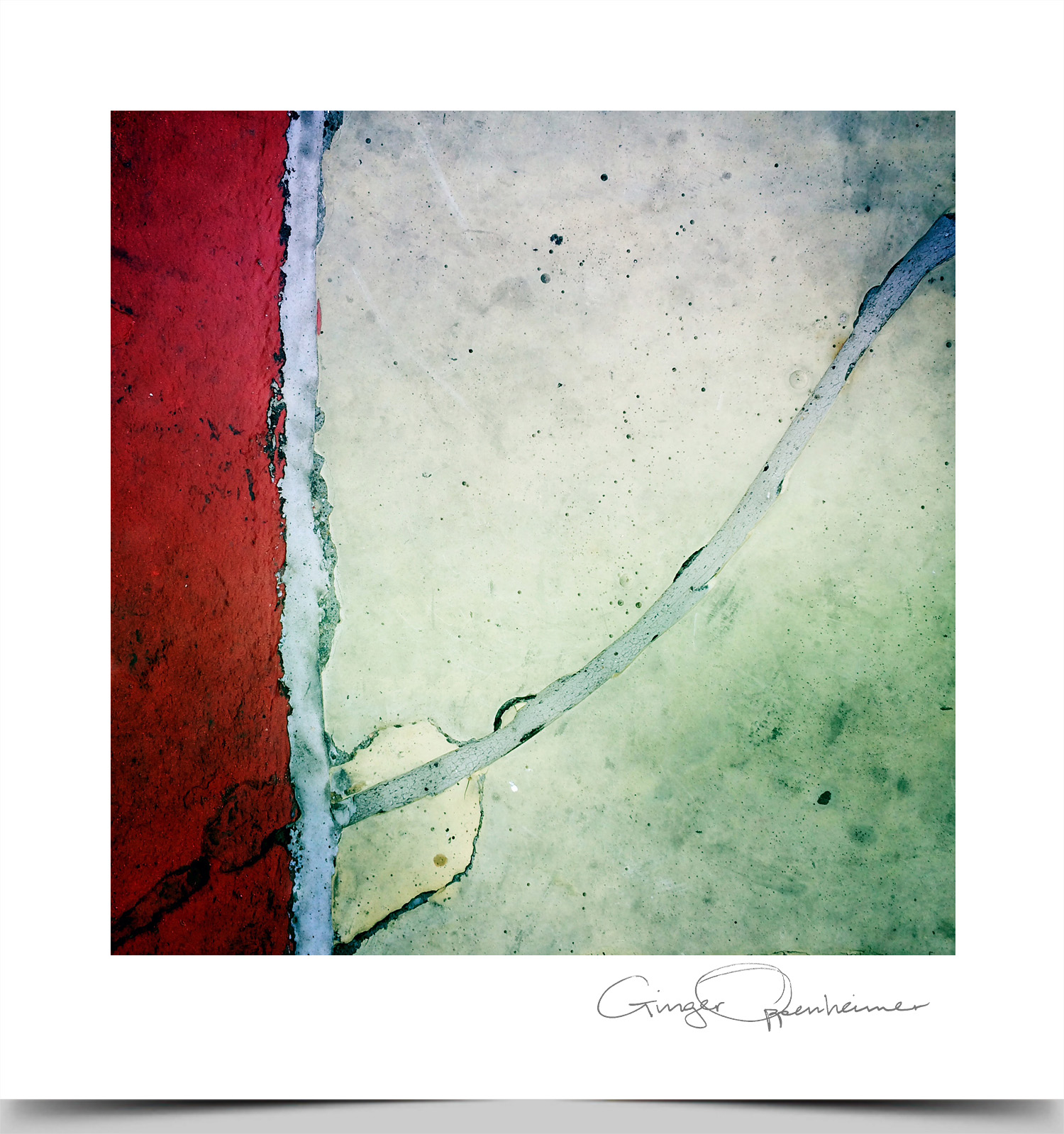
Wander
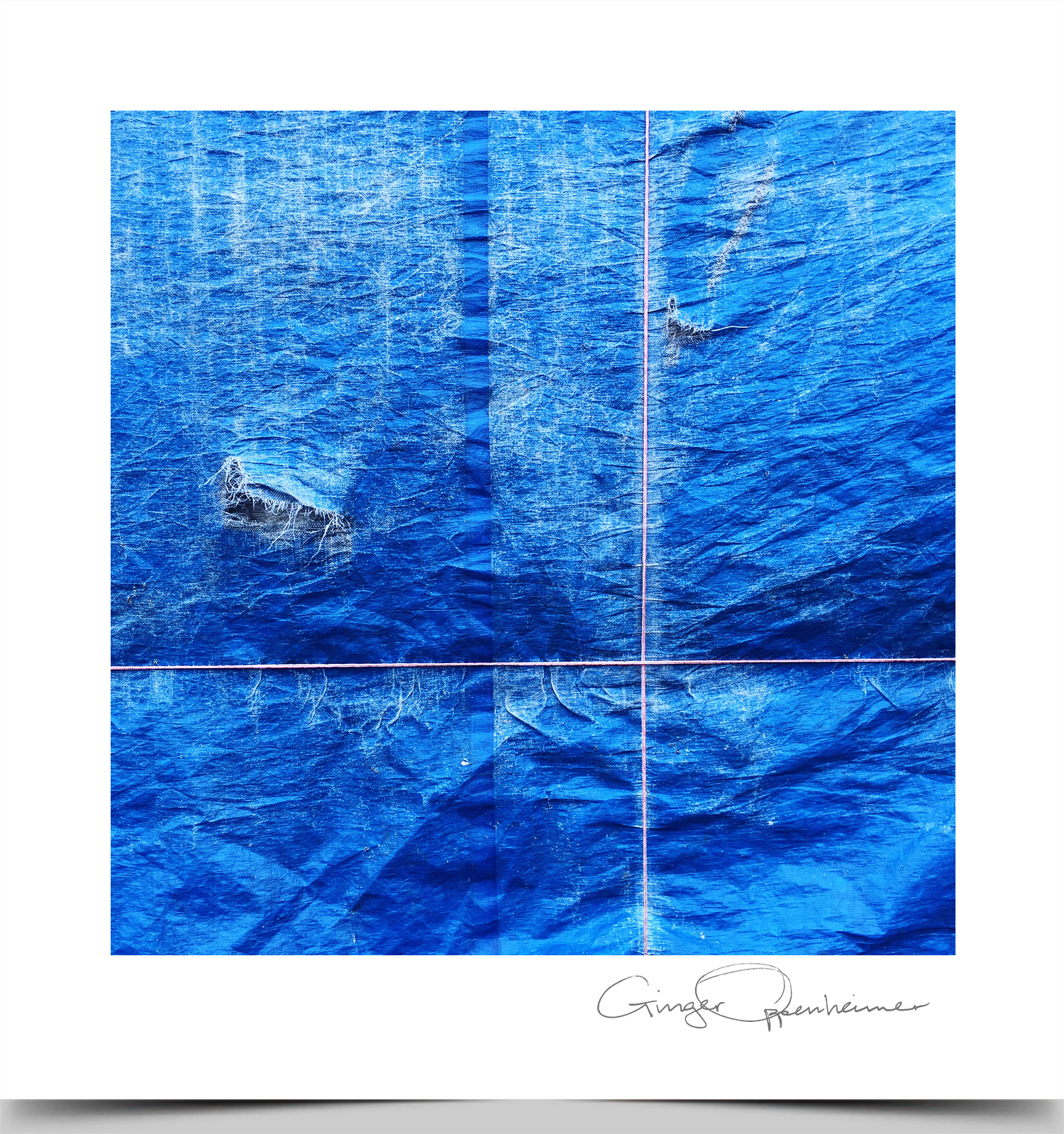
All Tied Up
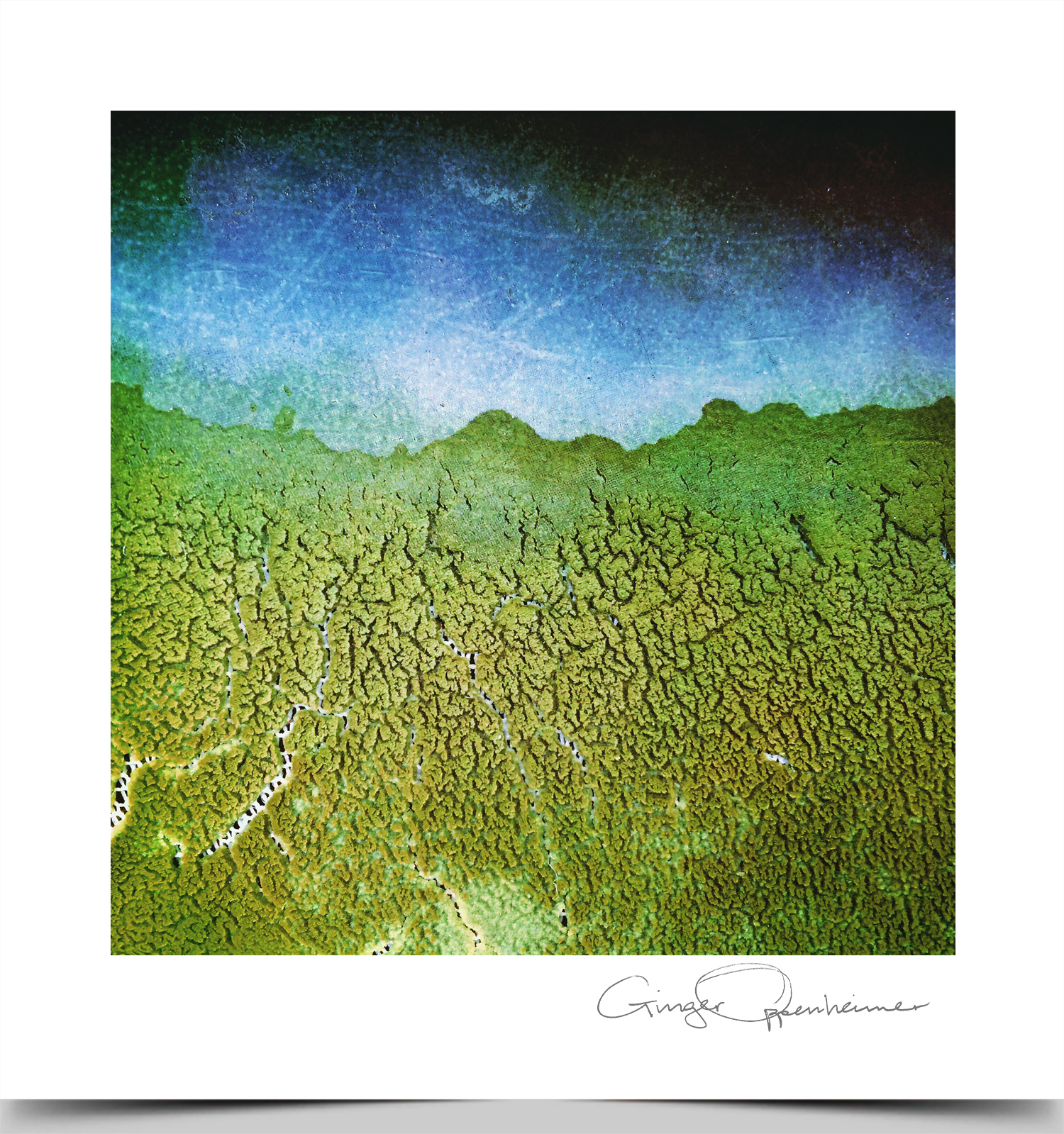
Dreaming
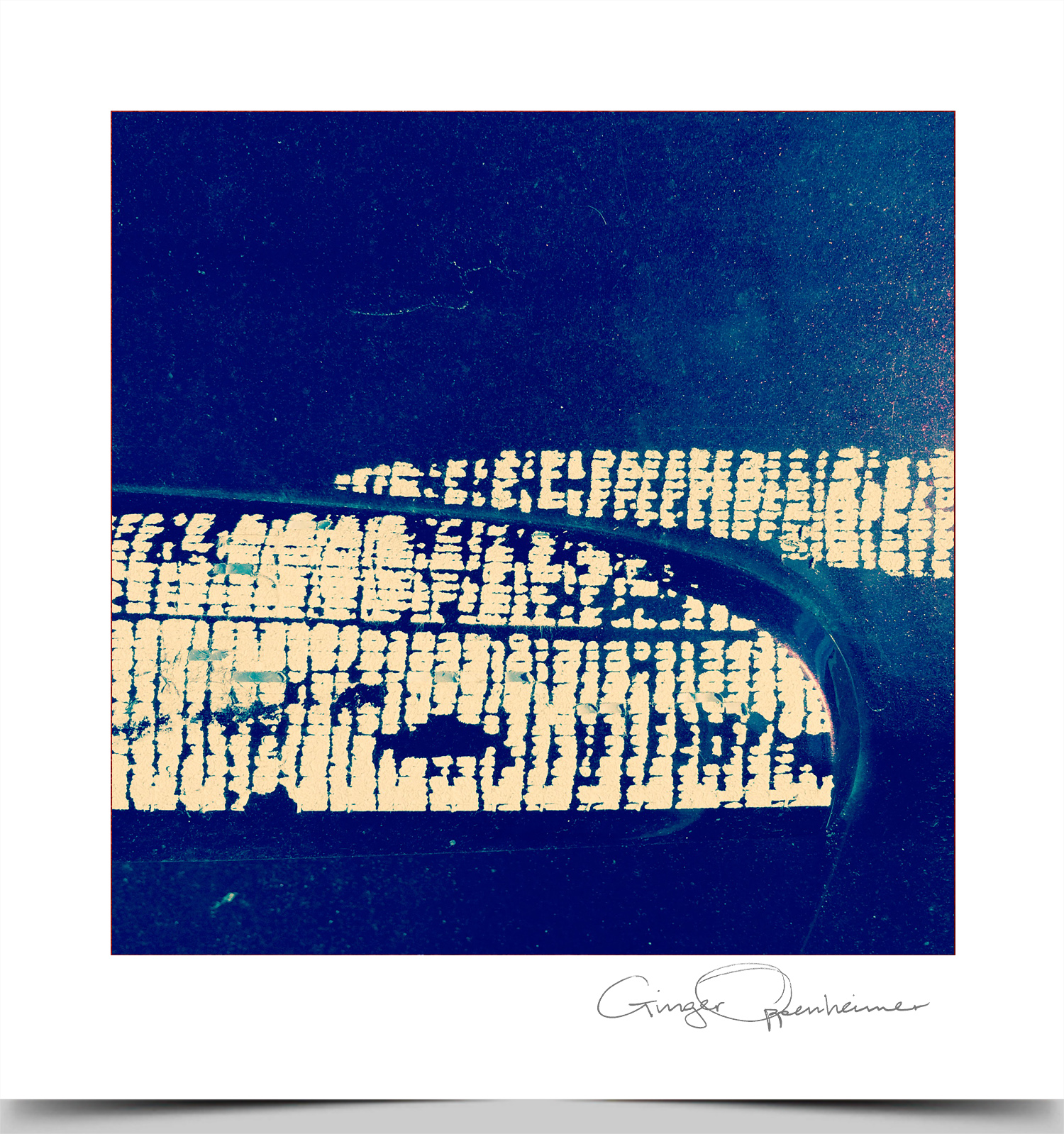
From the Deep
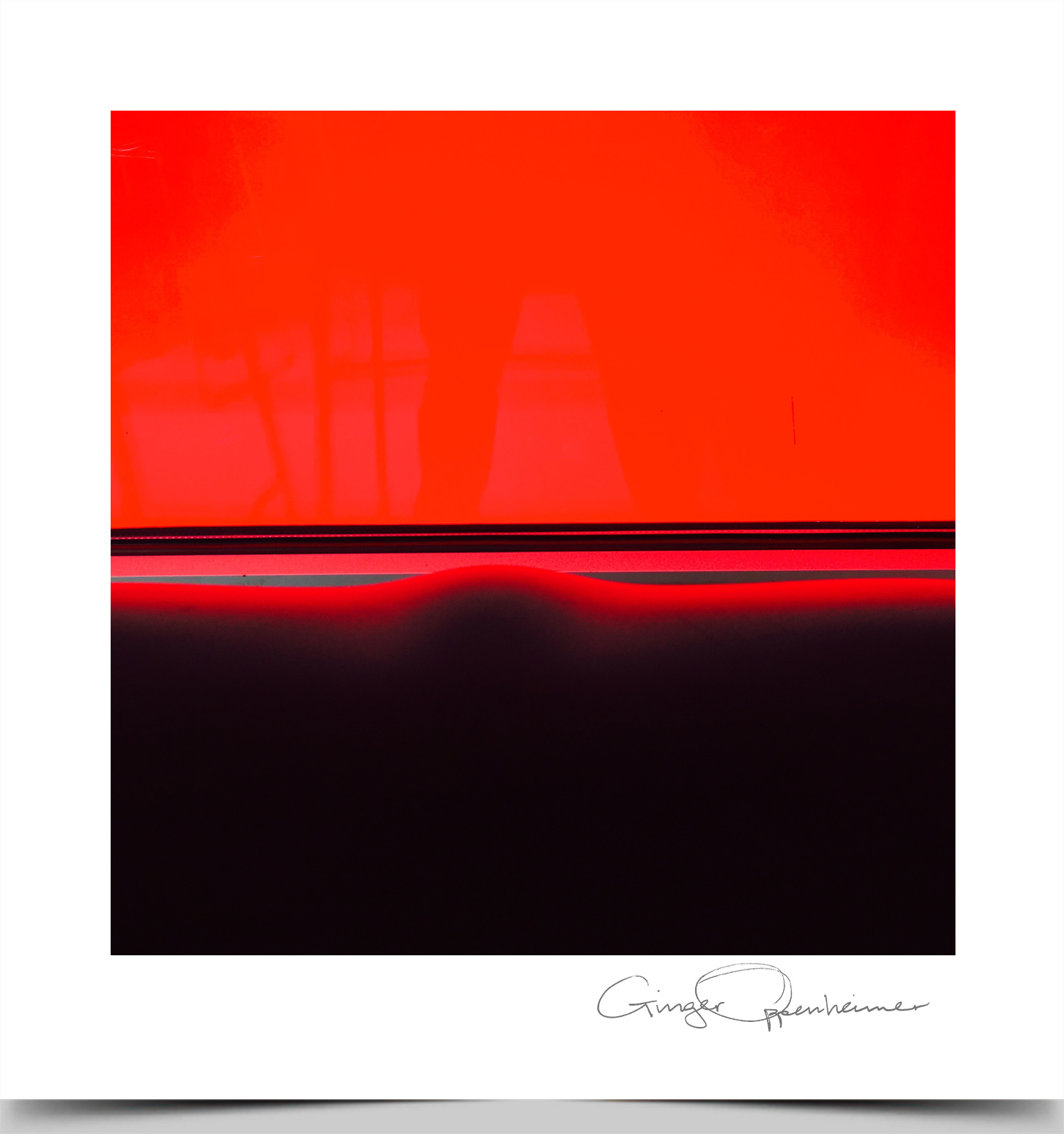
Glow
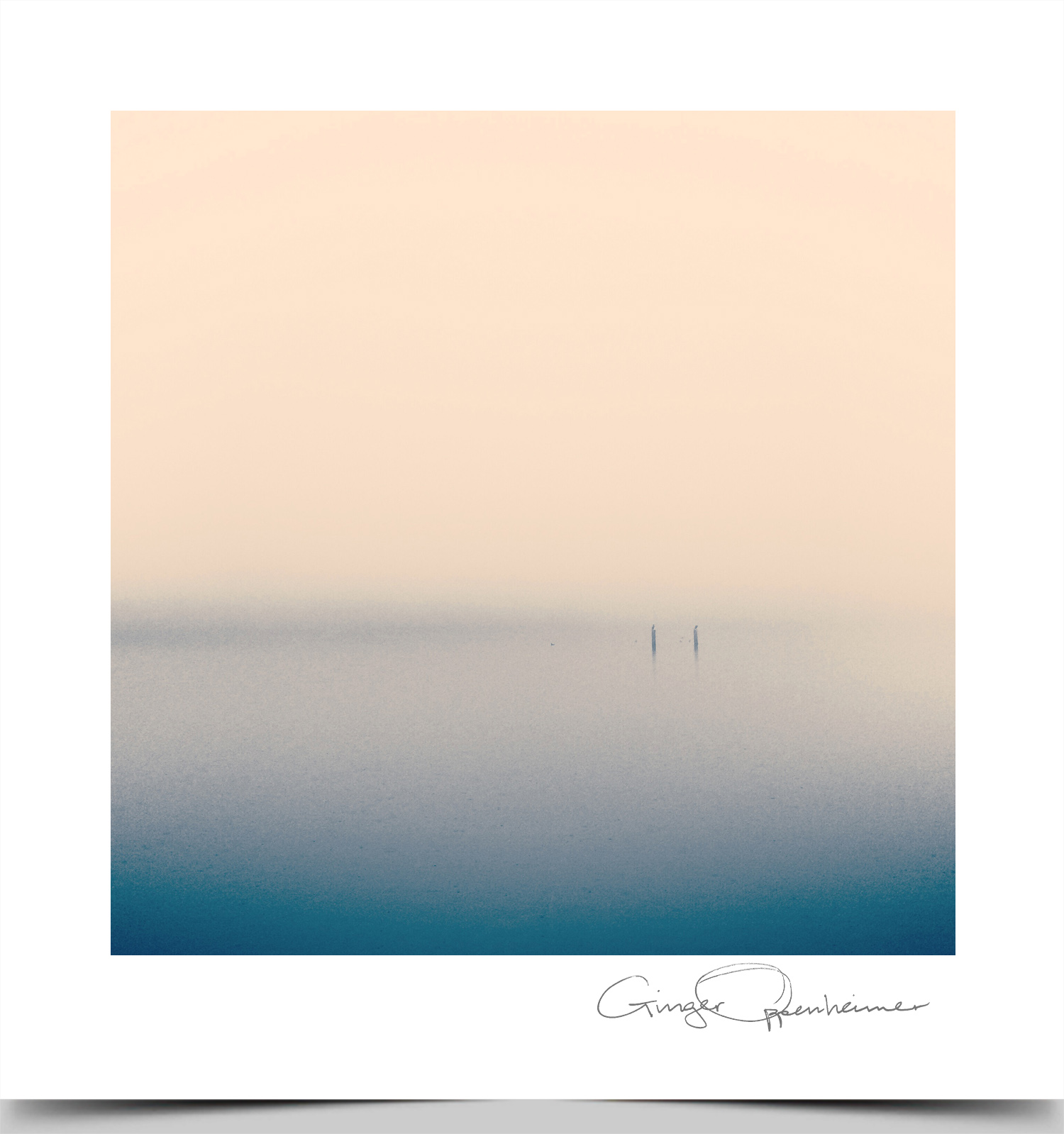
Lakeside
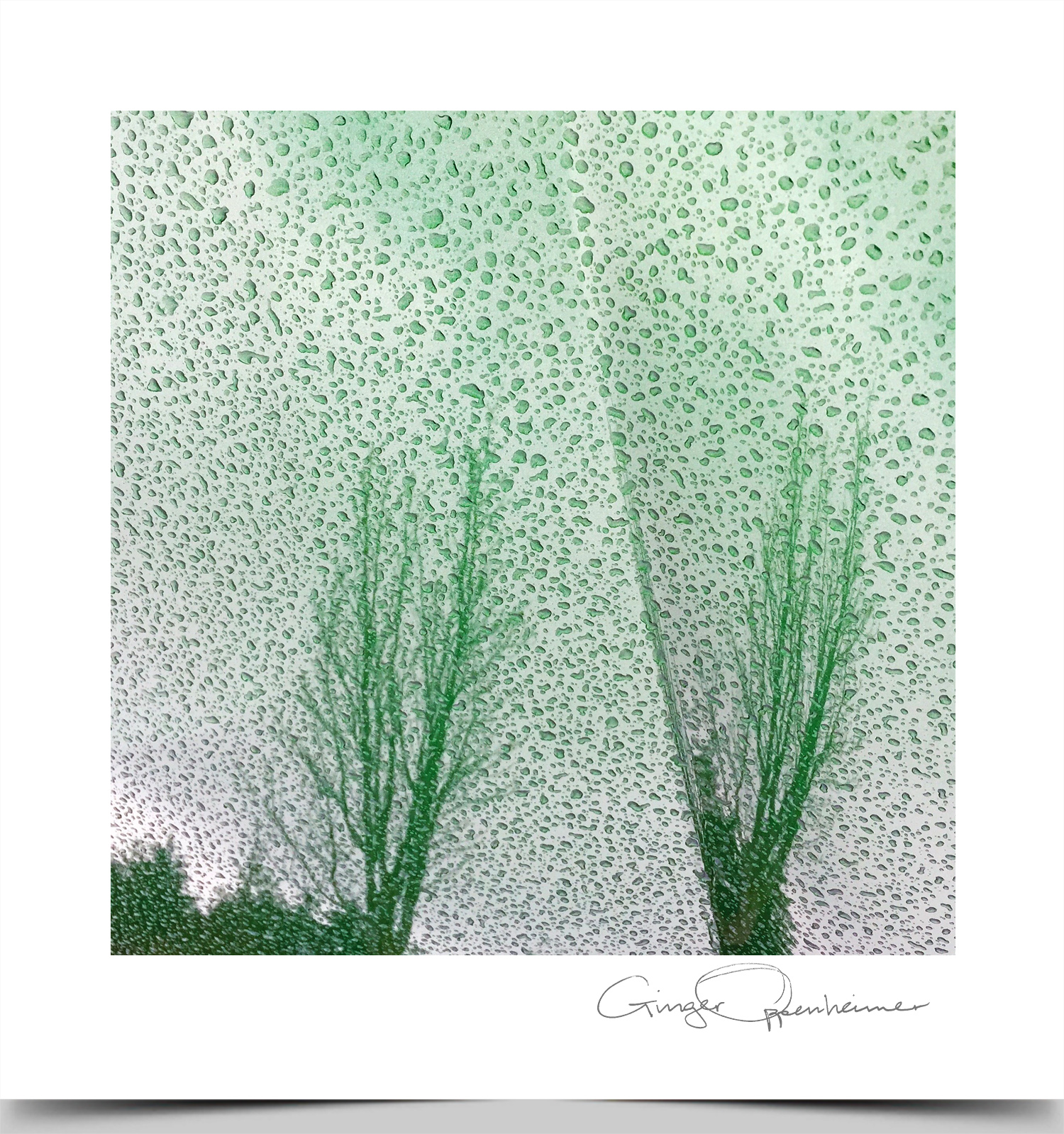
Magical Land
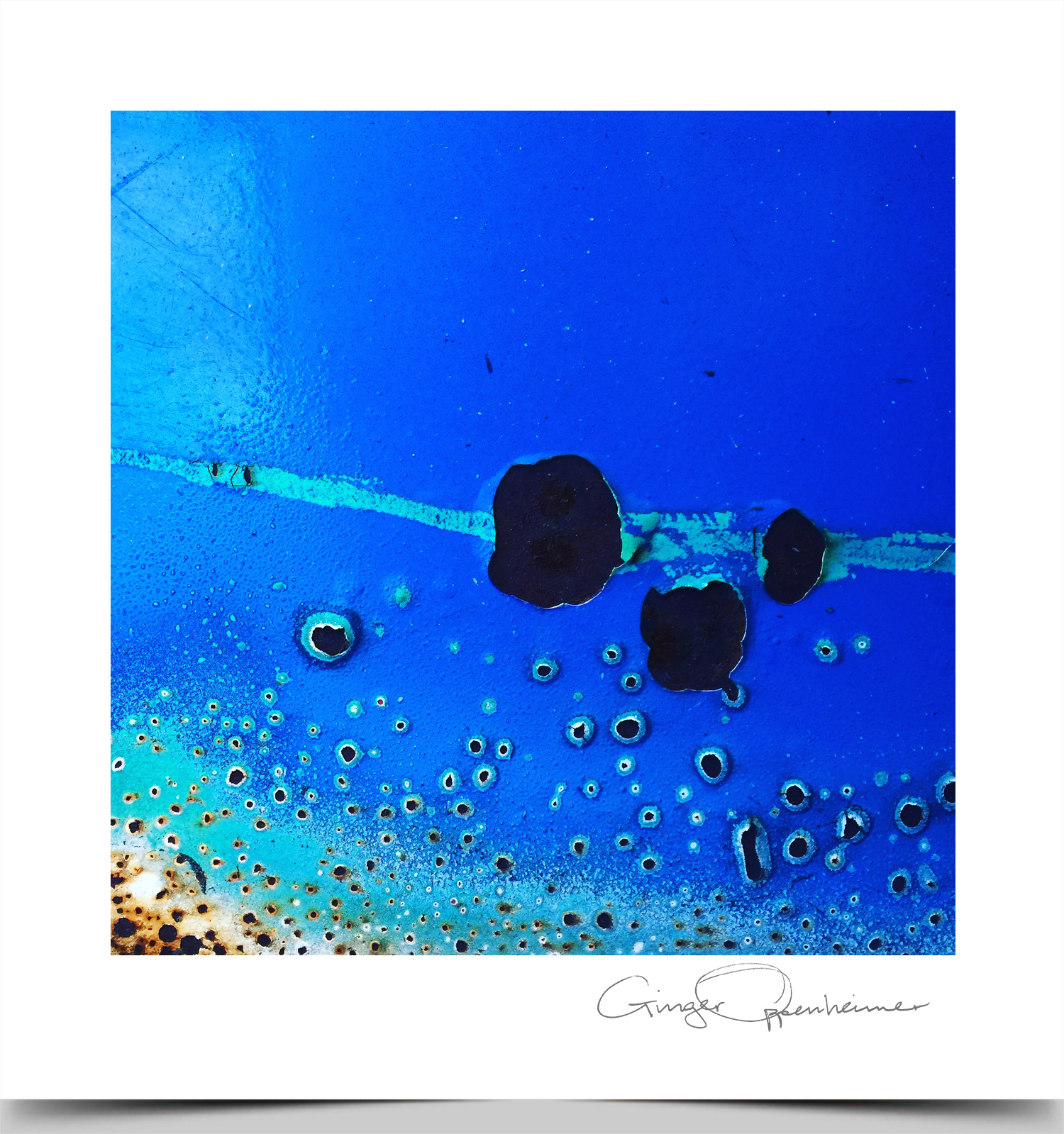
Oceanic
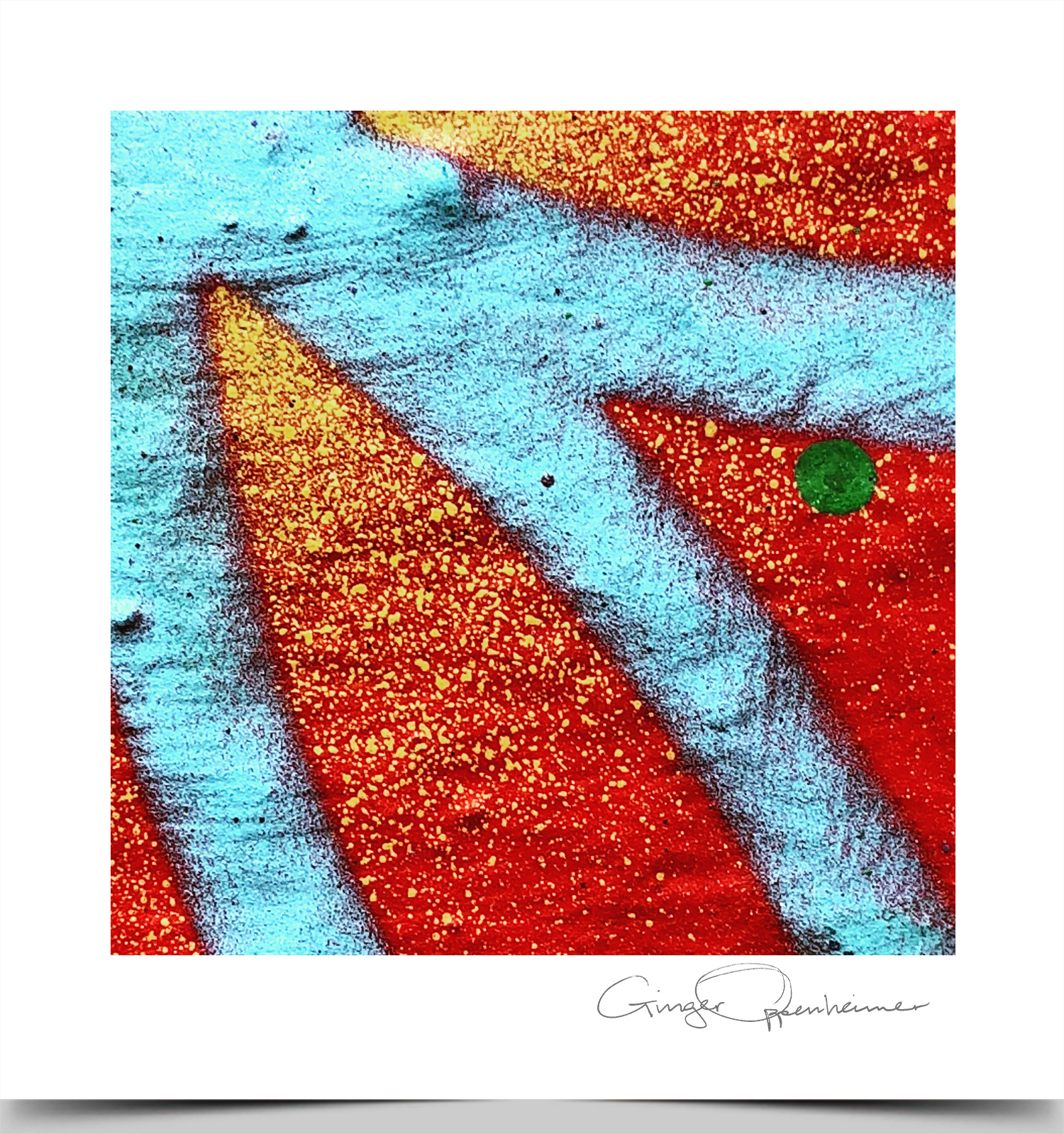
Triassic
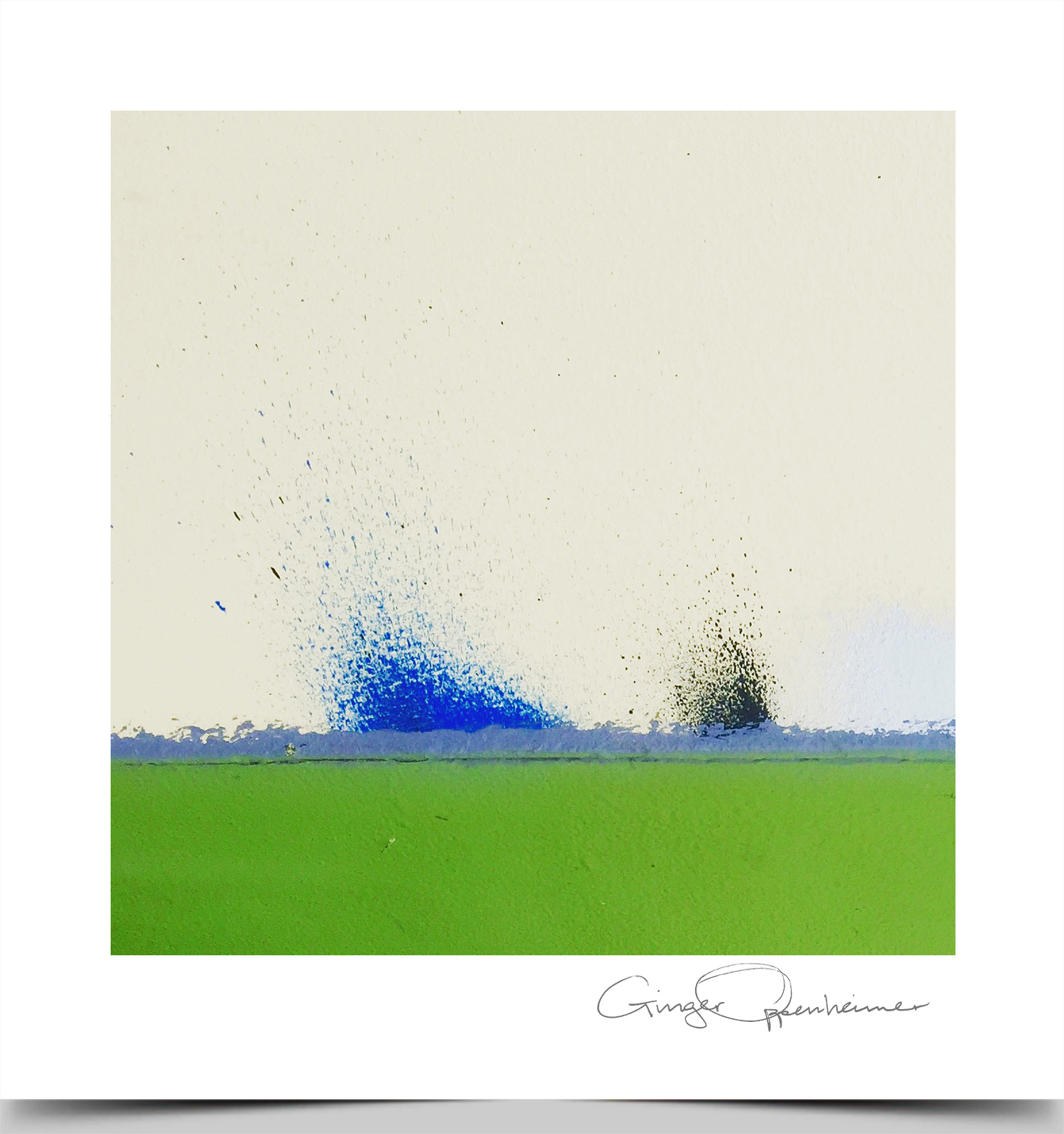
Splashdown
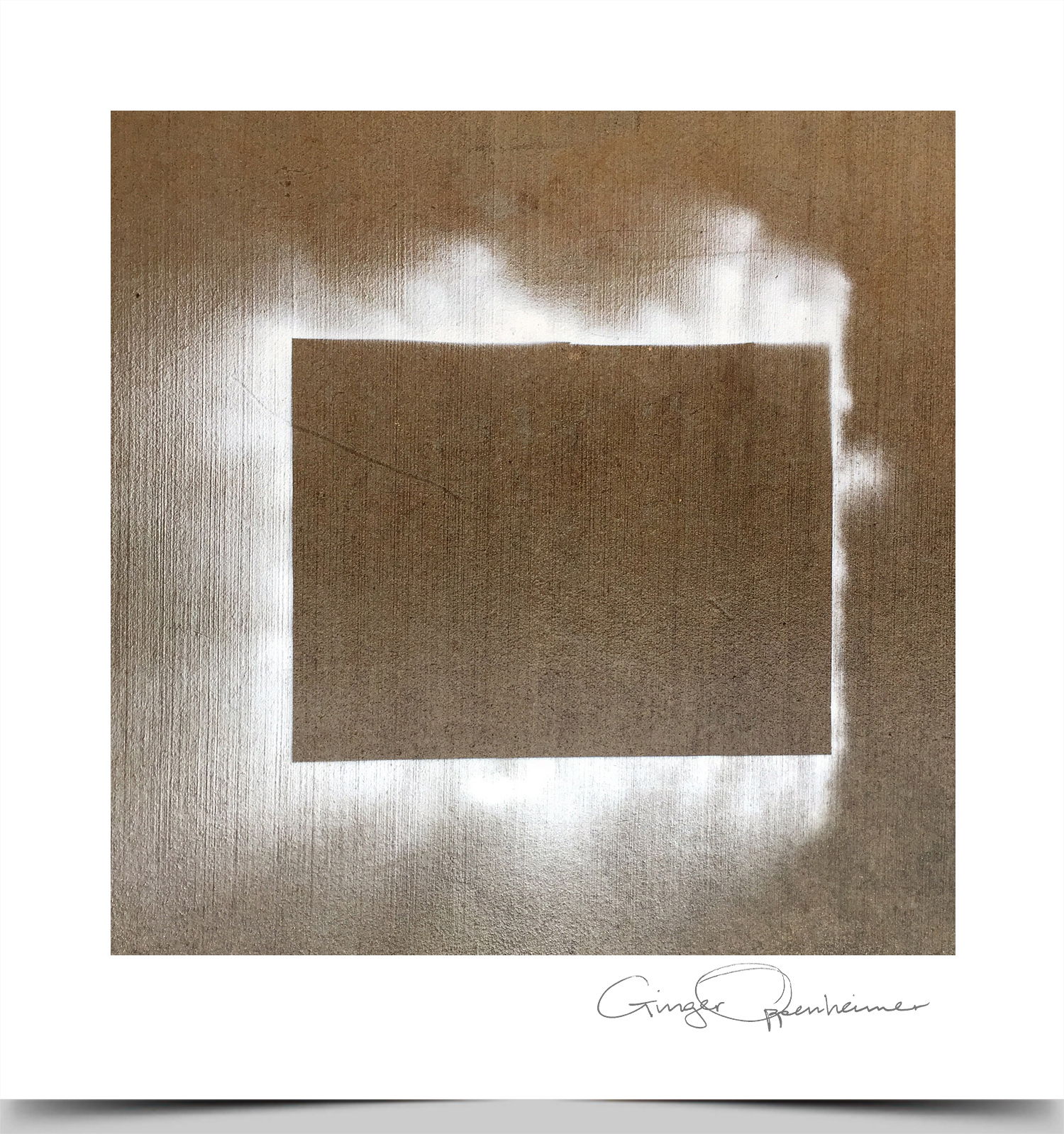
What Came Before
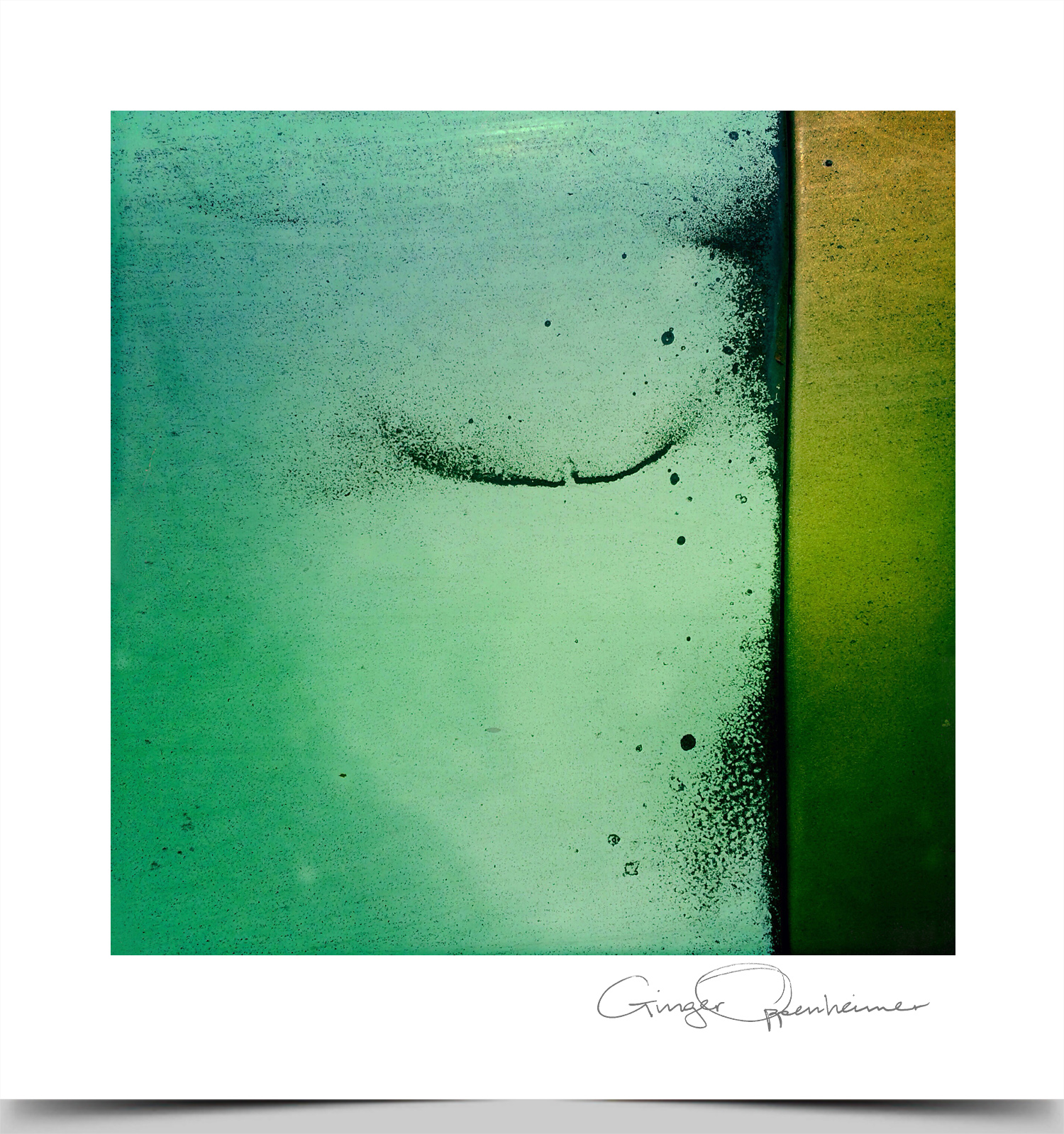
Wink

Ginger Oppenheimer: The whole of this exhibit is to highlight the beauty in the mundane and overlooked. Almost every image here is a part of something you might walk by (or walk on, for that matter) without a blink every single day: a dumpster, a crosswalk, the sidewalk, a boxcar, the bottom of a fountain, an old poster.
I like the idea of intrigue in photography, and many of my photos can be secretive in their own way. While you may think you're looking at a landscape, it doesn't seem quuuuuuite right, so that on second take, you realize it's actually fabric or metal – and an illusion has been created.
I also revel in the concept of elevating small bits of the world to be worthy of examination. A wall, partially chipped of its former layers, may not be beautiful on first examination, but put a frame around six square inches and, suddenly, geography emerges to define a whole world to explore.
VSONOMA: How did you initially get interested in Photography?
Ginger Oppenheimer: I've always been surrounded by photographers. My father was obsessive about it – we traveled in the US a lot, and my dad took photos of everything, including us. We had boxes and boxes of slides, Polaroids, and super-8 movies in our house.
One of my brothers ended up starting a multi-media biz that morphed through the years – photography and filmmaking were always a part of the formula. One of my sisters, who is now a doctor, majored in photography for her undergrad degree. It seemed that I was always surrounded by photography and photographs. I definitely had Kodak Instamatic cameras (the 104 and the pocket Instamatic) for much of my childhood and used them a lot, but it was always just for fun and I never once thought of myself as a photographer.
VSONOMA: ...and when did you get serious about it?
Ginger Oppenheimer: So although I was steeped in photography when growing up, I didn't pick up anything more than a snapshot camera until 1999 – I was in my early 40s and had a trip planned to the Galapagos. I bought a Canon SLR film camera and a few lenses, played with one roll of film here at home, and off I went with 22 rolls of film and a camera I barely knew how to use. I discovered almost immediately that I loved being close to everything and liked to frame things tight and close (the animals and birds of the Galapagos making that an easy task!). Taking photos in the Galapagos changed my world, particularly when I came back and discovered what my photos actually looked like. I couldn't have been more jazzed.
Eventually, I switched, of course, to a digital SLR, but it was an even bigger game-changer when I got an iPhone and started playing with the Hipstamatic app. When using my phone as my camera, I ended up using only Hipstamatic for at least three or four years. Hipstamatic imposes various effects, disguised as a "lens" or "film", on your photos and did so when you took the photo, not after. In addition to the fact that I simply loved the variety of effects achieved, you could, for many years, shoot only square images using Hipstamatic. That sealed it for – although I rarely use the app any more, I choose to shoot almost exclusively in the square format.
For quite a while, when I traveled, I used both the SLR and my phone because I wanted the strength and high resolution of the SLR images but the instant gratification of Hipstamatic effects on the phone images. Eventually, I just stopped wanting to carry a camera – especially as the resolution on iPhones improved – so for several years now, I've shot only on an iPhone and use the phone camera, processing images after the fact rather than before as Hipstamatic did.
VSONOMA: What are your favorite subjects or areas of interest?
Ginger Oppenheimer: I look for patterns, rust, unusual color combinations, peeling paint, drips, grids, shadows. I like anomalies in the norm. I'm drawn to any distressed metal: boxcars, garbage cans, old trucks, boats, especially those surfaces that are scratched, dinged, peeling, holey, rusty, or all of the above. But I also like minimalism in my images and have been working toward clean, pure line and form in my work.
VSONOMA: Please tell us a little about your style and process.
Ginger Oppenheimer: I shoot only on the iPhone and process almost exclusively on the phone as well. Various apps for phones are now as powerful as Photoshop. I tune images typically with SnapSeed™ and Lightroom CC™. The iPhone still has a color shift challenge in some environments, so I sometimes send images to my desktop to use Photoshop. And in reverse, I have actually sent SLR photos from my archives to my phone to tune because I can get the nuances I want that I can't seem to get using Photoshop.
Because I shoot a lot of abstract work, I play with orientation a lot, spinning images 90 or 180 degrees; I also often will spin an image perhaps just a few degrees and crop to see if I can find a more interesting angle than the one I shot. It's nearly guaranteed that the image you see is not oriented the way I took it.
VSONOMA: Do you cite any other photographers, past or present, as mentors or having a special influence on your work?
Ginger Oppenheimer: For the last few years, I've been heavily influenced not by any one person in particular but by the Instagram community of minimalist photographers. Since Instagram is global, I have at my fingertips a world of astounding imagery. Without a doubt, such work has helped me step up my game.
VSONOMA: Last question...If you could choose a location for a 'grand photo expedition', where would it be?
Ginger Oppenheimer: Chaouen, Morocco, also known as The Blue City. Besides the fact that blue is my favorite color, I think, like San Miguel de Allende (where I have been), it would be a photographer's paradise. I know this extraordinary visual treat is in my future.
VSONOMA: Thanks so much for the interview Ginger. Really enjoyed it!
Ginger Oppenheimer is an editor with an agency that specializes in multichannel digital marketing and digital product development aimed at consumers and professionals, particularly health care firms. She lives in Bellingham, Washington, with her husband, Jeff, and dogs, Zoe and Apple.
Instagram: @gingerophoto
Flickr: https://www.flickr.com/photos/gingeropp/
All images © Ginger Oppenheimer, Photographer